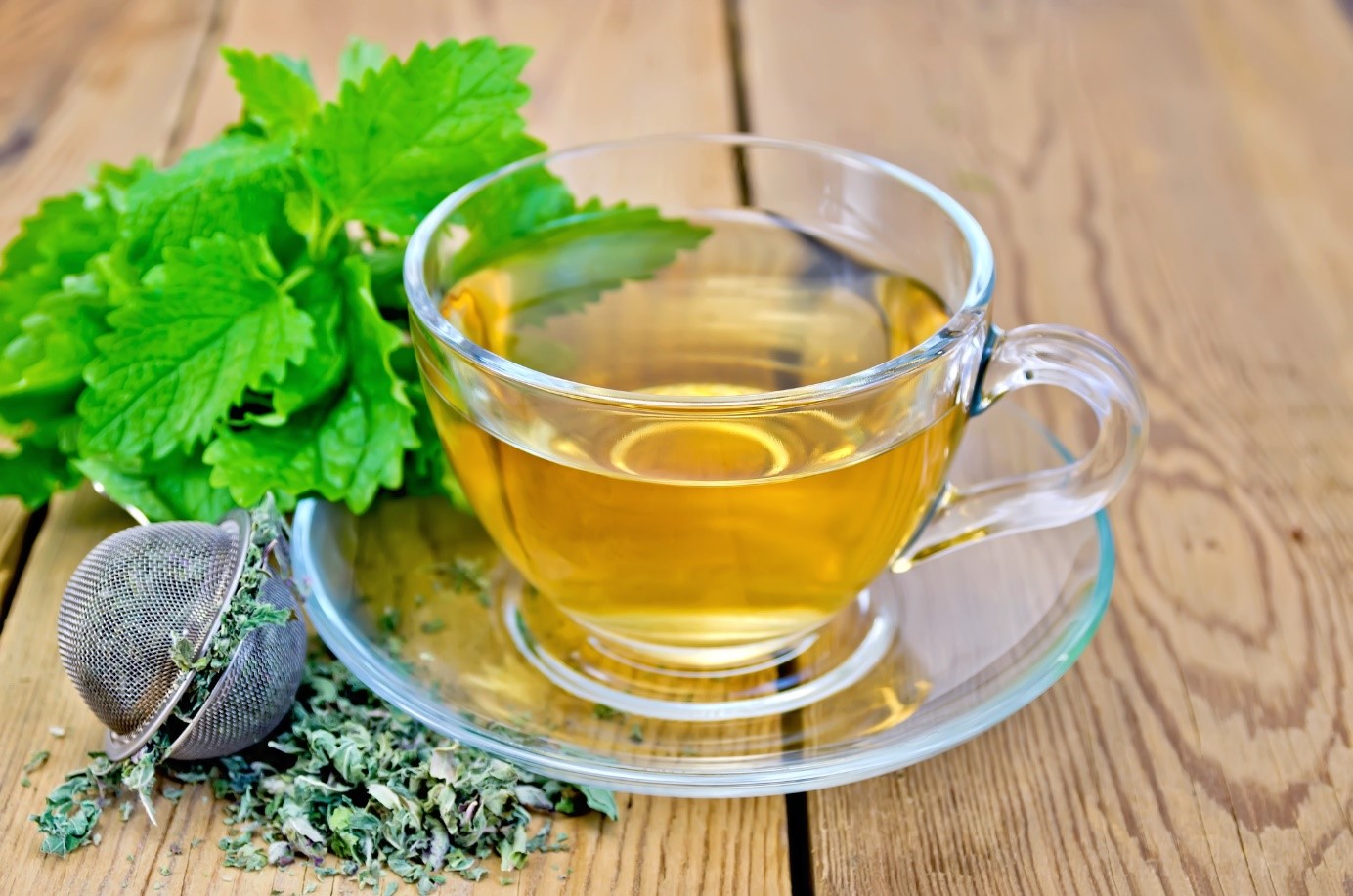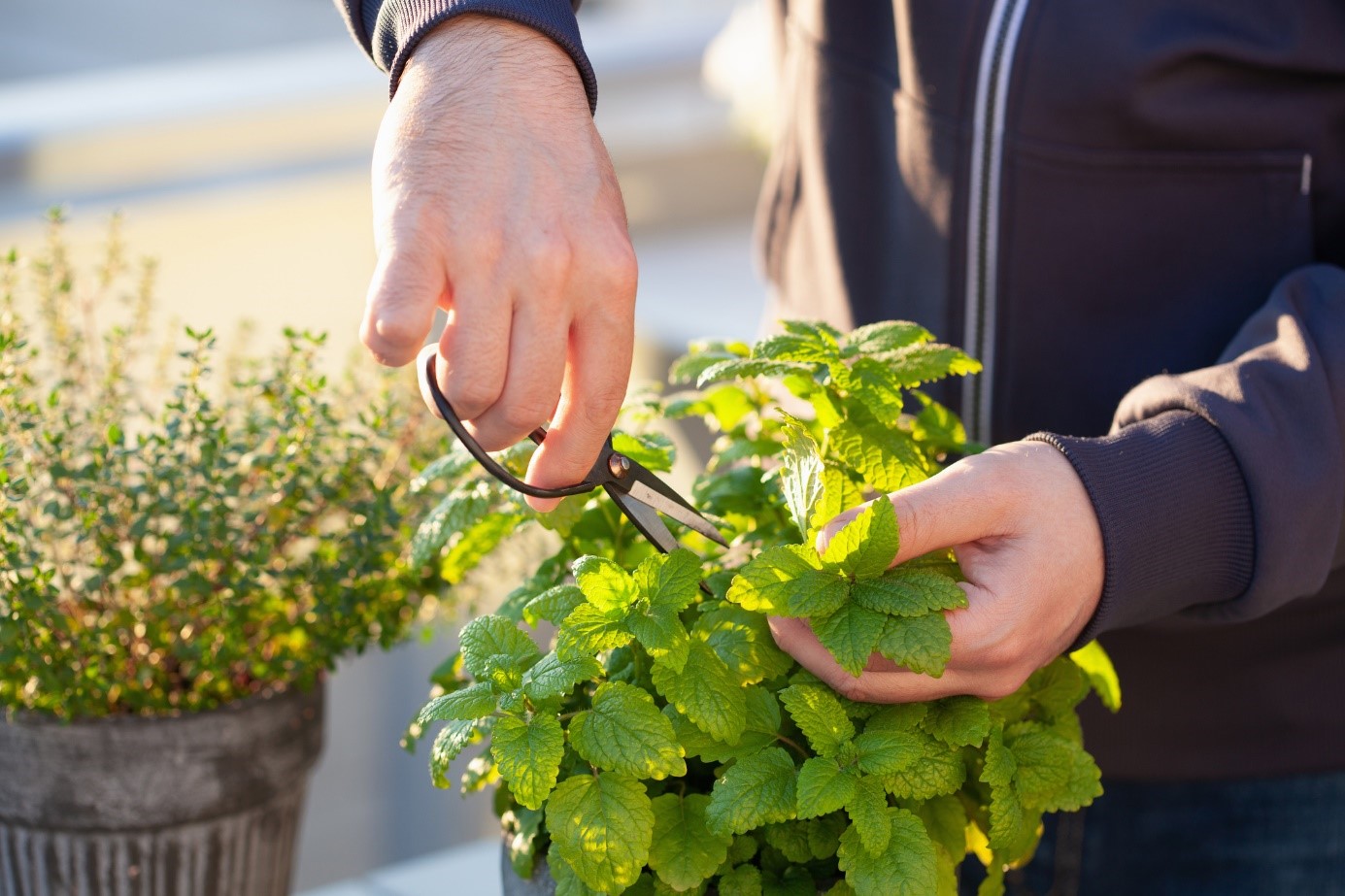- ncbi.nlm.nih.gov - Safety classification of herbal medicines used in pregnancy in an international study
- medicinenet.com - Melissa officinalis
- journals.sagepub.com - Melissa officinalis L: A review study with antioxidant prospective
- healthline.com - 10 benefits of lemon balm and how to use it
Lemon balm: why is it important, what are its effects? (+ Growing)

The lemon balm is one of the most popular plants in Central and Southern Europe, especially for its typical taste and aroma.
Characteristics
Lemon balm = Melissa officinalis.
The stem produces petiolate, opposite, ovate, saw-toothed leaves, dark green on the face and light green on the reverse.
The flowers change colour according to the age of the plant. The fruit is hard.
Cultivation is not difficult...
It needs shade during midday and must be protected from the wind. Plant in a well-drained soil (loamy sandy loam) that is rich in nutrients.
Internal use
Effects:
- Anti-inflammatory effects
- spasmolytic (relieves spasms)
- antiviral
- antibacterial
- choleretic (promotes bile production and excretion)
- carminative (against flatulence and flatulence)
- sedative (calms)
- stomachic (promotes appetite)
Lemon balm contains more than 100 substances. Among the best known are:
- Vitamin C
- Vitamin B
- flavonoids
- phenolic acids
- triterpenes
- tannins
The essential oils give lemon balm a number of characteristic properties:
- characteristic aroma
- sedative effects
- antiviral effects
What are the known medicinal forms of lemon balm?
- Capsules
- tea
- extract
What about insomnia?
Lemon balm improves cognitive abilities and mood, relieves stress and irritability.
In several studies, lemon balm has been shown to have a positive effect on falling asleep. Lemon balm can eliminate depression and anxiety. It results in better falling asleep.
Lemon balm in pregnancy and breastfeeding
One scientific study examined pregnant women's knowledge of the effects of several plants (bearberry, dandelion, echinacea, ginkgo, hops, horsetail, lemon balm, St. John's wort, sage and valerian).
They found that 78.3% of the women surveyed had little knowledge of their effects. In any case, a doctor or pharmacist should be consulted before use.
Lemon balm is one of the herbs suitable for pregnancy and breastfeeding.
What does lemon balm help with:
- indigestion
- headaches
- tension
- insomnia
- helps maintain hormonal balance
- has relaxing effects
However, it can also have side effects.
Side effects:
- Hypersensitivity reactions
- skin irritation
- headache
- nausea
- vomiting
- abdominal pain
- dizziness
You can minimise side effects such as upset stomach by taking lemon balm with food. You can also reduce the risk of side effects by consuming less than 2 grams of lemon balm a day.
Lemon balm should only be taken on a short-term basis. A general rule of thumb is to discontinue taking lemon balm for one week after every three weeks of use.
In case you are taking it, you should consult your doctor before taking it:
- medications for the treatment of glaucoma
- medicines for the treatment of thyroid disease
- barbiturates
- sedatives
Lemon balm tea
To make a cup of tea, you need fresh herbs or a sachet. Pour hot water over them and let them infuse for 5-8 minutes. Cover the cup with a saucer or lid while infusing.

Table with mixtures and effects
| HERBAL MIXTURE IN TEA | EFFECT |
| Hawthorn, lemon balm, fennel fruit, caraway fruit, aniseed fruit | for breastfeeding mothers to increase milk production |
| Carum carvi (cumin), Foeniculum vulgare (fennel), Melissa officinalis (lemon balm), Mentha piperita (mint), Rubus idaeus (raspberry), Tilia cordata (linden) | children's tea for good digestion |
| Fagopyrum esculentum (buckwheat), Melissa officinalis (lemon balm), Ribes nigrum (blackcurrant), Sambucus nigra (elderberry), Urtica dioica (nettle) | support the elasticity of blood vessels, strengthens the liver |
| Achillea millefolium (yarrow, mouse tail), Calendula officinalis (calendula), Capsella bursa-pastoris (cocklebur), Hypericum perforatum (St. John's wort), Lamium album (devil's-bit scabious), Melissa officinalis (lemon balm) | for female disorders such as irregular menstruation |
| Hypericum perforatum (St. John's wort), Melissa officinalis (lemon balm), Achillea millefolium (yarrow), Lavandula officinalis (lavender), Origanum vulgare (yarrow). | beneficial effect on the psyche, counteracts nervousness |
| Crataegus laevigata (hawthorn), Equisetum arvense (horsetail), Helianthus tuberosus (Jerusalem artichoke), Melissa officinalis (lemon balm), Sambucus nigra (elderberry) | beneficial effect in sclerotic conditions and elevated blood pressure |
Lemon balm syrup
Approximately 30-35 stalks of lemon balm are needed to prepare the syrup.
1. Tear the leaves and soak in 1 and ¾ litres of cold boiled water.
2. Leave the mixture to infuse for two days in a dark, cool place.
3. Strain the liquid and pour it into a pot.
4. Add 750 g of sugar and 20 g of citric acid.
5. When it starts to boil, boil for 5 minutes.
6. When cool, pour into bottles.
Fresh lemon balm liqueur
Pour the white spirit over 200 g of lemon balm leaves.
Leave to stand in a dark room for two weeks.
Strain, add ½ kg of sugar or honey and stir.
Lemon balm tincture
In general, the ratio of the weight of the plant to the volume of alcohol is as follows:
- 1:5 and 1:3 for the soft parts of the plant (inflorescence, leaves, flowers).
- 1:3 to 1:1 for the roots, bark and fruit
25-60% alcohol (e.g. vodka) is used to prepare tinctures.
Procedure:
Crush the plant into small particles.
This settles at the bottom and reduces the quality of the tincture.
Place the weighed and finely ground or chopped plant in a sealable container (glass or ceramic).
Then pour in the calculated amount of alcohol (at least 1 cm above the crushed plant). Stir the tincture, close the container and store in a dark place at room temperature.
The maceration time is usually 10-14 days.
However, in the case of lemon balm, 4 hours is sufficient to prepare the tincture. After the necessary time has elapsed, strain the resulting solution through gauze into a container.
The best choice is a dark bottle, which can be purchased at a pharmacy.
External use
Lemon balm and its effects on the skin
You can find it on the market in the form of lotion or cream. Lemon balm is used to care for all skin types (dry, oily).
Effects:
- Maintaining a youthful appearance of the skin.
- refreshing the skin
- regulation of sebum production
- soothing the skin after shaving and waxing
It can also be used in hair care. It facilitates combing of hair, regenerates the skin in the hair area.
Lemon balm
Melt 5 tablespoons of beeswax and 5 tablespoons of almond oil in a water bath.
Once melted, add 3 drops of essential oils (lavender, lemon balm, sandalwood and frankincense essential oils). Stir the mixture and fill the jars.
The balm prepared in this way is used for migraines. Massage it into the temples.
Harvesting and storage
How to propagate lemon balm?
The first way is propagation from seed.
Sow the seeds in the spring (April). Sow them on the surface of the soil (they can be lightly covered with soil). This method of planting is chosen because lemon balm needs light to germinate.
The seeds should germinate in 5 to 9 days at a soil temperature of between 18 and 21 °C.
Another method is propagation from cuttings. These are taken in spring or autumn. Cut a few centimetres off the soft shoots of the mother plant. The mother plant cannot flower when the cuttings are taken.
Remove two-thirds of the leaves from the cuttings and pinch off the ends. Dip the stems in rooting medium. Plant the stems in a substrate that can be mixed with sand. Unlike the first method, avoid exposure to sunlight when taking cuttings.
Propagation by division is carried out in spring or autumn. Dig up the part of the plant with the roots. Divide into smaller parts. Plant these in pots or in the ground.
Harvesting
Collect the leaves or inflorescence before flowering. Harvest several times a year. The first harvest is from early July. The second harvest at the end of September.

Dry the leaves and stems in a thin layer without turning in a ventilated, shaded place. If you choose a drying room, the temperature must not exceed 40 °C. Drying of the lemon balm must be quick. Slow drying leads to browning and deterioration (breaking, crushing, loss of aroma).
How do we know when a lemon balm is well dried?
- Nice green colour with a hint of grey
- pungent taste
- lemony aroma
Store the dried herb in a dry, airy and shady place for a maximum of one year. It loses its effects if stored for longer.
Interesting resources










